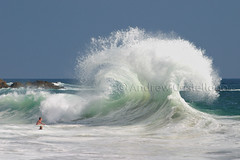
Being able to find fish on a lake before you even put your boat in the water is key to a successful day on the water. Looking at a map and being able to read the bottom of the lake and determine the migration route the fish will follow to and from the feeding grounds and where the feeding grounds are from a map is important. This way the time you spend fishing will be in the more productive areas of the lake instead of casting blindly and hoping for something to come along.
Remember of course that a map is worth it only if you take the time to learn to read it properly. Tackle shops often carry plastic maps but these often lack true accuracy.
The lines represent the depth breaks with each line showing changes in depth that graduate from shore to the deepest water in the lake. You can find the break or desired depth change on a map just as you can by looking for it on the water. During warm water seasons fish will relate to a more gradual slope or break and during colder water seasons a sharper drop into deeper water will be their choice.
Maps show you if a stream drains south or north facing watersheds or if you face meadows, rapids or waterfalls. Maps also show the easy way back to shore, the best spots to find gas, gear, etc.
Marine Charts
The best specialized maps are Marine Charts. These offer information about shifting shoals, sandbars and such that can be critical for boaters and productive for fishers. Do realize that marine charts change from year to year so get updates so that you don’t run aground due to old charts or get lost.
Once you’ve located the desired place on the map, finding the location on the water becomes the next challenge.
The Benefits of GPS for Fishing.
GPS technology make your fishing expeditions much more rewarding. More accurate than “line of sight” or other navigation methods, a GPS unit tells you where you are and where you’re going to within a few meters. Once considered a luxury, GPS is now an essential item in the fisher’s arsenal.
A GPS is very handy and a good depth finder is useful too. Finding these places still requires some traveling time but good preplanning with a map and GPS means less wasted time. It is especially useful if you fish huge backcountry and featureless waterways.
Combine the benefits of mapping with GPS by getting digital charts or scan in paper maps with GPS mapping software and then enter way points along your planned route.
There are always changes to the bottom that are not on some older maps and these places can sometimes be great fishing spots. Fewer people will know of these places and thus less pressure on the fish stock there. A GPS unit can mark these fishing hot spots so that you can find it again easily.
Sometimes fishermen will share tips on good fishing spots with their buddies and other fishermen. Giving GPS coordinates makes this easy to do.
Finding the right fishing spot isn’t the only consideration - finding your way back home again is another, and your GPS receiver lets you do that easily. It is better to enjoy the peace on the lake and see the fish are biting without worrying about the rigors of navigation. Receivers provide all the navigational information you need, including position, heading, bearing, speed, time to destination and more. For some great offers on Handheld GPS Navigation have a look at The Fishing Shop
I am an absolute nut for fishing.
Fishing mad love everything about it.
So because everyone else I know is sick to death of me talking about fishing I’m going to talk to you.
The lastest equipment cannot live without my lastest high tech buy my Fish Finder don’t know what I would do without it.
So check in ever week for my lastest stories….. Gone Fishing
Check out all my info http://www.the-fishing-shop.com
0 comments:
Post a Comment